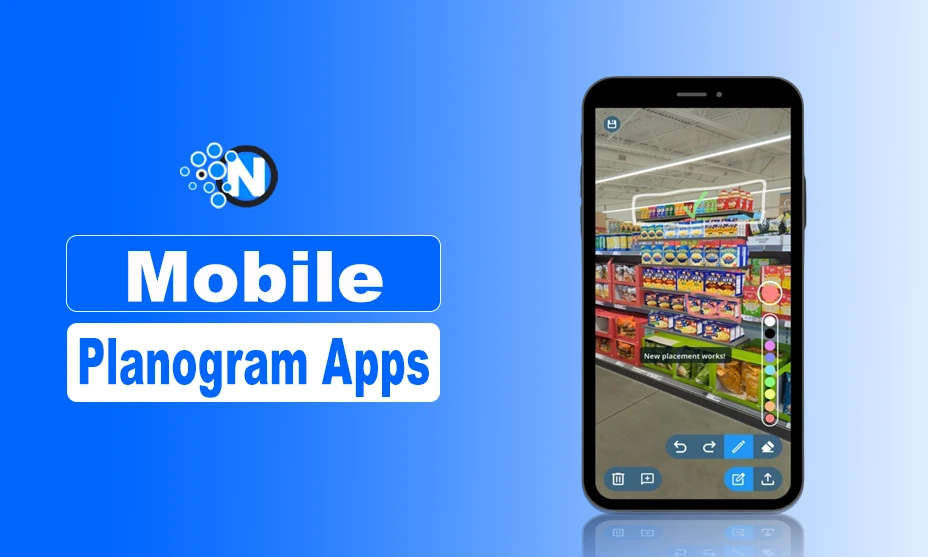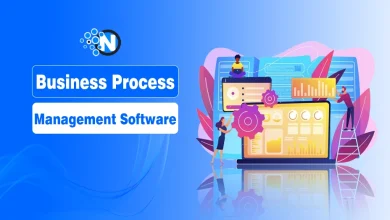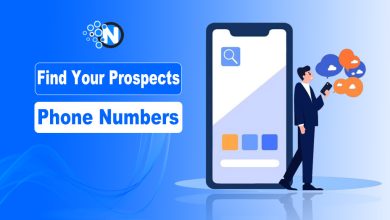
The retail sector is always changing, hence keeping ahead of the competition calls for creative ideas to maximize retail space and improve the consumer shopping experience. Mobile planogram apps improve real-time decision-making and team member cooperation by allowing visual merchandising layouts straight from the store floor to be updated and accessed.
Through technologies for inventory control, space planning, and compliance monitoring, they simplify the execution process and thereby greatly increase accuracy and efficiency in retail space use.
For iOS and Android, the visual merchandising app is a user-friendly solution that enables effective display control and real-time updates on shelf layouts, therefore facilitating smooth communication between the head office and retail sites.
Key characteristics include the capacity to send and receive planograms and assignments, the in-app barcode/QR scanner for inventory management, and monitoring of KPI implementation to guarantee compliance and maximize work hours for store workers.
Let’s discover more about the reasons mobile planogram apps are vital for stores.
Benefits of Planograms For Retailers
LEAFIO.AI research and experience indicate that visual merchandising software can increase sales per meter or foot by up to 8%, enhance assortment optimization by as much as 15%, and accelerate the planogram generating process by as much as 50%. But how does that work?
- Optimized Space Utilization: Planogram applications let stores examine consumer behavior, sales records, and product popularity to maximize shelf space distribution. Retailers may improve the customer shopping experience and boost sales by making sure items are clearly shown and easily available.
- Assortment Planning: Retailers can deliberately arrange their product range. Retailers can combine items for cross-selling possibilities or complimentary displays by considering consumer preferences and sales data, therefore increasing sales and customer happiness.
- Product Placement and Sequencing: Planogram applications let stores decide where to put products most strategically. Retailers may design visually appealing displays that draw consumers and increase sales by carefully grouping goods depending on size, brand, color, and pricing.
- Data-driven decision-making: Planogram applications give stores access to useful retail analytics, which lets them decide on shelf placement, product mix, and general space use with knowledge. This data driven strategy guarantees stores maximize their retail environment depending on real-time insights.
Knowing the advantages of planogram applications, let’s now discuss some of the best ones accessible nowadays.

Why are Mobile Planogram Apps Particularly Beneficial?
Using a mobile app for planograms has one of the advantages in terms of convenience. Retailers may access their planograms anytime and anywhere using a mobile app. This allows them to make adjustments or modifications to their planograms on-demand without actually being at the store.
Retailers with several sites or those that regularly have to change their displays depending on shifting trends or promotions will find especially helpful this degree of adaptability.
The enhanced accuracy and efficiency of a mobile app for planograms are still another benefit. Planogram tools let stores quickly drag and drop goods onto a virtual shelf to show their intended display. This lowers the possibility of mistakes by removing the necessity for hand measurements and computations.
The program may also automatically determine the units required for every item, hence optimizing inventory control. Automating these tasks with automation tools helps stores save time and money so they may concentrate on other crucial areas of operation.
Moreover, mobile apps for planograms let several departments of a retail company communicate and cooperate more effectively. Employees from many departments can access and help the planogram using a shared app, so guaranteeing everyone agrees.
This brings openness and cooperation, which results in better displays and raised client satisfaction. Further improving teamwork is some mobile planogram apps’ real-time updates, which let all team members view changes right away.
Features To Look For When Choosing A Mobile Planogram App
Choosing a mobile planogram software means not just streamlining shelf space management but also improving the general efficacy and efficiency of retail operations.
A decent planogram software should guarantee data accuracy and usability over many devices, offer simple design tools, and interface easily with current systems. These important aspects should help you decide which software best fits your requirements.
1. Intuitive User Interface and Design Flexibility
Mobile planogram apps’ user interface is critical since it determines how quickly and effectively users may learn and apply the tool. Seek for applications with a simple, understandable interface that streamlines design without compromising sophisticated capabilities.
Design must also be flexible; the software should allow for simple alterations and customizing of shelf layouts, product placements, and display sizes to fit various store formats and seasonal changes.
2. Real-Time Collaboration and Cloud Integration
Working in real-time changes the fast-paced retail scene of today. From anywhere, a planogram app with cloud integration lets several users work on the same project concurrently so that revisions are quickly reflected and available to every team member.
Maintaining current planograms reflecting current inventory levels and shopper insights depends on quick responses and revisions made possible by this capability.
3. Comprehensive Analytics and Reporting Tools
Strong analytics and reporting features of effective planograms should let users monitor performance, examine consumer behavior, and maximize product placement. Detailed studies can assist in determining which designs increase client involvement and enhance revenue.
Furthermore, the capacity to interact with inventory control systems and sales data will give insightful analysis of product performance, stock levels, and compliance rates, thereby facilitating data-driven decisions and improving profitability and efficiency.
The Future of Retail Space Optimization
Future retail space optimization rests in combining planogram apps with other retail execution tools and technology as the retail sector develops. Machine learning algorithms and artificial intelligence (AI) will let stores examine enormous amounts of data and create very precise planograms catered to particular consumer interests.
Planogram apps will become even more easily available as mobile technology develops, letting stores examine and change planograms in real time from anywhere. Combining planogram apps with inventory control systems can help stores maximize stock levels and minimize out-of-stock, hence improving the customer shopping experience.
Final Verdicts
All things considered, mobile planogram apps have transformed how stores maximize their available space. These apps enable stores to carefully design and arrange their products using their qualities and advantages, therefore improving client satisfaction and sales.
Retail space optimization will surely bring more innovations and chances for stores to create interesting and successful retail environments as technology develops.




